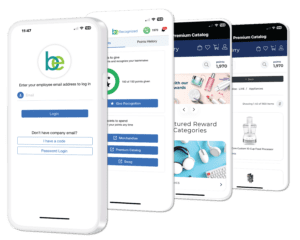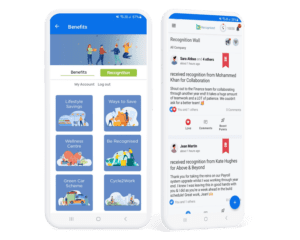May 8, 2024

Employee engagement is a vital aspect of a thriving company culture. Creating an effective recognition programme for the modern workforce that values purpose and connection has become a strategic imperative for today's employers as this helps drive engagement. But where do you begin, and how do you ensure your efforts translate into tangible benefits like enhanced productivity, reduced turnover, and a happy, committed team?
In this guide, we will walk through the steps of creating a robust employee recognition programme that speaks to the hearts and minds of your staff. Whether you're a seasoned HR professional looking to refresh your strategies or a team leader eager to ignite your group's potential, this post will provide actionable insights to steer your programme toward success.
Baseline: how engaged are your employees currently?
To create a recognition programme that resonates with your employees, you must first understand what engagement and recognition truly mean in the context of your organisation.
Employee engagement is employees' emotional commitment to their organisation's goals, which results in their willingness to go above and beyond. This commitment isn't uniform and can manifest differently across your workforce. Therefore, understanding your company's unique engagement challenges is critical in understanding how to recognise success and reward your employees.

You can start with employee engagement surveys, which can provide a pulse on your workforce's attitudes and satisfaction levels. These surveys must be conducted regularly to accurately indicate change over time.
Gallup’s employee engagement survey of over 100,000 teams globally shows that engaged employees can boost a company's profitability by up to 23%, making assessing your current engagement level important both for your staff and your bottom line.
Building an effective employee recognition programme
An effective recognition programme is built on several core components. Communication, rewards or incentives, career development, and work-life balance are the foundational pillars that can lead to a more engaged workplace. Each of these areas requires thoughtful planning and execution to ensure they have the desired impact.
Transparent communication is essential in every aspect of the workplace. An open-door policy, regular team meetings, and accessible leadership can all contribute to a culture of transparency and trust. However, it's about more than just the frequency but the quality and relevance of the information exchanged.
Recognition is a powerful driver of engagement and can take various forms, from a simple thank-you note to social recognition from peers or management, yearly awards, or benefits that specifically support your employees' financial, mental, and physical well-being. The key is to make recognition regular, specific, and public to make it truly meaningful.
Employees want to know that their employer values their potential and is willing to invest in their future. Providing growth opportunities through formal education or on-the-job training is crucial to engagement.
A healthy work-life balance prevents burnout and demonstrates that the company respects employees' time and life outside of work.

Personalisation is the key to success
Designing your recognition programme requires consideration of the unique needs and preferences of your workforce. Involving employees in the design process can foster engagement from the start and is a great way to get feedback throughout the entire process.
You should consider all the aspects that drive engagement if you want to create a transformative employee recognition programme that actually has an impact. Rewards, benefits, incentives, and regular, scheduled communication are necessary tools to keep your programme on track.

However, there's no one-size-fits-all approach to employee recognition so you should customise your strategies to maximise their impact. Utilise engagement platforms such as Terryberry's 'Be Engaged' to create bespoke experiences tailored to different teams or individuals, allowing you to effectively reach every corner of your organisation.
To ensure your programme is a success, start small and scale up as you see what's working. Lead by example, with senior management championing the engagement initiatives. Foster a bottom-up approach, empowering employees to take charge of their engagement.
Challenges and changes
Expect challenges along the way, from resistance to change to resource limitations. Combat these by staying committed to your goals and being flexible. Keep the lines of communication open and be willing to adjust your strategies as needed.
Finally, you can't manage what you don't measure. Establish KPIs (key performance indicators) for your programme, such as retention rates, productivity metrics, and reported satisfaction levels. Use these metrics to track the success of your programme and adjust as needed.
If you would like to understand how employee engagement platforms can help you work toward your employee engagement goals, Terryberry support is available.
